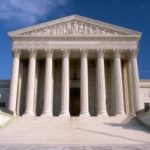In a constitutional system of government, the role of the judiciary is essential for maintaining the balance of power, protecting individual rights, upholding the rule of law, interpreting the Constitution, and ensuring equal justice for all. In this lesson, students learn about the role of an independent judiciary in the United States.
Declaration Revisited: Native Americans Podcast
Today is our second revisit to the document that made us a nation. Writer, activist, and Independent presidential candidate Mark Charles lays out the anti-Native American sentiments within it, the doctrines and proclamations from before 1776 that justified “discovery,” and the Supreme Court decisions that continue to cite them all.
This short episode includes a one-page Graphic Organizer for students to take notes on while listening, as well as discussion questions on the back side.
Believe It or Not? Putting the Consumer’s Questions to Work
This unit introduces students to the purpose and practice of media literacy. It includes pre- and post-visit activities designed to bracket the Believe It or Not? ED Class ( The activities also can be done independent of a visit to the Newseum.) Students will come to understand why not all information is trustworthy and how to differentiate the good from the bad. They practice using a set of tools – the consumer’s questions – to deconstruct and evaluate information sources.
Arizona Legislature v. Arizona Independent Redistricting Commission (2015)
Did Proposition 106 violate the Elections Clause of the US Constitution by removing congressional districting power from the state legislature? The case summary provides the facts, and the Supreme Court’s answer to this question.
An Independent Judiciary: Cherokee Nation v. Georgia and Cooper v. Aaron

This documentary explores the Supreme Court cases Cherokee Nation v. Georgia (1831) and Cooper v. Aaron (1958) that defined our understanding of the role of the judiciary. In Cherokee Nation, the Supreme Court ruled it lacked the jurisdiction to review the claims of an Indian nation in the U.S. In Cooper v. Aaron, the Court affirmed that its interpretation of the Constitution was the “supreme law of the land” and that states were bound by its decisions. A PDF lesson guide is provided.
The Origin, Nature and Importance of the Supreme Court
Chief Justice John G. Roberts Jr. and high school students discuss the Supreme Court: its history and traditions, how it selects and decides cases, and the role of an independent judiciary. A lesson guide accompanies the video.
A Conversation on Judicial Independence

Justices Stephen G. Breyer, Anthony M. Kennedy and Sandra Day O’Connor and high school students discuss why an independent judiciary is necessary and how Article III, Section1, in the Constitution safeguards the role of judges. This video complements the documentary An Independent Judiciary: Cherokee Nation v. Georgia and Cooper v. Aaron.
Article III: The Judicial Branch
Article III establishes the judicial branch of government, which is responsible for interpreting the laws. At the highest level, the judicial branch is led by the U.S. Supreme Court, which today consists of nine justices. In the federal system, the lower courts consist of the courts of appeals and the district courts. Learn more about judicial independence and judicial review in the National Constitution Center’s learning module.
Court Shorts: An Impartial Federal Judiciary
This short video from the U.S. Courts focuses on the importance of a fair and impartial judiciary. What does this concept mean to you? In this video, students question federal judges on these principles.
The Judical Nomination Process
What is the nomination process for Supreme Court justices and federal judges? Find out in a multimedia package of educational resources geared to high school students, their teachers, and interested adults. What do judges promise in the judicial oath of office? What is the role of justices and judges? What kinds of information are nominees asked to share during the nomination process? What do judges, themselves, say about what it means to be impartial?